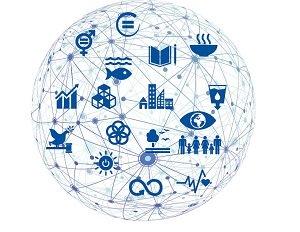The Internet of Things is growing at an exponential rate, faster than some companies can keep up. The Internet of Things also emphasizes the need for faster internet connections. The impending future interconnectivity of 50 billion devices around the world has inspired a slew of 5G network tests in the United States, in attempts to handle the speed necessary to facilitate the Internet of Things. Faster internet speeds will be good for the Internet of Things so data and analytics can be quickly calculated and ready for data analysts to peruse.
However, there has been a kink in the wire that has been slowing IoT data and analytics analysis down. The problem lies within the sensors a certain IoT setup contains. For example, a factory could have industrial robots and automated machines that have thousands of sensors within its manufacturing. Those sensors are responsible for monitoring how the machines are working and allow for the data to be exported and perused by the analysts. Researchers at the Georgia Tech Research Institute (GTRI) say they have developed a "flexible, generic data-fusion software" that will allow the data from all Internet of Things connected sensors to be shown at once.
 "The Internet of Things has always been something of a Tower of Babel, because it gathers data from everywhere - from the latest smart-building microcontrollers and driver-assist vehicles to legacy sensors installed for years. Traditionally, people wanting to utilize IoT information have had to examine the attributes of each individual sensor and then write custom software on an ad-hoc basis to handle it," said Heyward Adams, the lead researcher at GTRI. "FUSE lets us take a task that used to involve a week or two, and complete it in 10 or 15 minutes. It provides a standard way of communicating in the unstandardized world of IoT."
"The Internet of Things has always been something of a Tower of Babel, because it gathers data from everywhere - from the latest smart-building microcontrollers and driver-assist vehicles to legacy sensors installed for years. Traditionally, people wanting to utilize IoT information have had to examine the attributes of each individual sensor and then write custom software on an ad-hoc basis to handle it," said Heyward Adams, the lead researcher at GTRI. "FUSE lets us take a task that used to involve a week or two, and complete it in 10 or 15 minutes. It provides a standard way of communicating in the unstandardized world of IoT."
Another challenge that could slow down the process of making sense of IoT sensor data, are the formats that they could be encrypted in. Finding a one-fits-all answer to communication protocols is what GTRI are trying to do.
The FUSE data-fusion software has been developed to serve the following purposes:
- Providing users with online forms that let them define the sources they need in the form of “domains” – abstract descriptions of how the targeted data interrelate;
- Gathering incoming raw data according to user specifications and mapping them into the specified domains. The data can then be transformed and manipulated using “tasks,” which are user-defined JavaScript functions or legacy software that run inside the FUSE service;
- Displaying the processed data to users on-screen via an interactive data visualization, exploration and analysis dashboard that supports most data types including numeric, logical, and text data. Users can also devise their own custom dashboards or other interfaces.
"One of the advantages of FUSE is that it can be broken up and distributed to accommodate any sensor and server architecture. So it can grow and change as a business, facility or campus changes over time," Adams concluded.
The researchers at Georgia Tech are trying to automate the processes behind perusing data of automated systems, which would make every element of the Internet of Things more efficient. Now, there are still manual processes that need to be followed with acquiring the data produced by the sensors in an IoT setup. FUSE would be assisting with this, and could be an invaluable addition to automated setups.
Source: Georgia Tech News
